- Almost every metric used to track the spread of Covid-19 for South Africa is showing a downward trend, while cases still increase at significant rate.
- Gauteng, the province which has contributed by far the highest number of cases to the national total, is showing a marked decline in cases reported daily.
- While testing has declined, the number of people testing positive per test done has remained relatively stable.
The rate at which Covid-19 cases are increasing daily in the country has for the first time, since the beginning of the outbreak in March, started declining, according to official, reported data.
This is driven largely by significant declines in the number of cases being reported in Gauteng daily.
“While there are promising signs, now is not the time to let down our guard. We have to continue to work together to reduce the number of new infections,” President Cyril Ramaphosa said in a statement over the weekend.
Gauteng, the smallest province geographically but the most densely populated, accounted for 35% of all confirmed coronavirus cases as of 1 August, when the reported number of cases breached half a million.
Since early July, the average daily case increases over seven days rose above 10 000 new cases a day, rising to a high of more than 12 000, and now declining again slightly, to just over 10 000.
The slight decline is visible when the seven-day rolling average is mapped over time with the actual reported daily case increase.
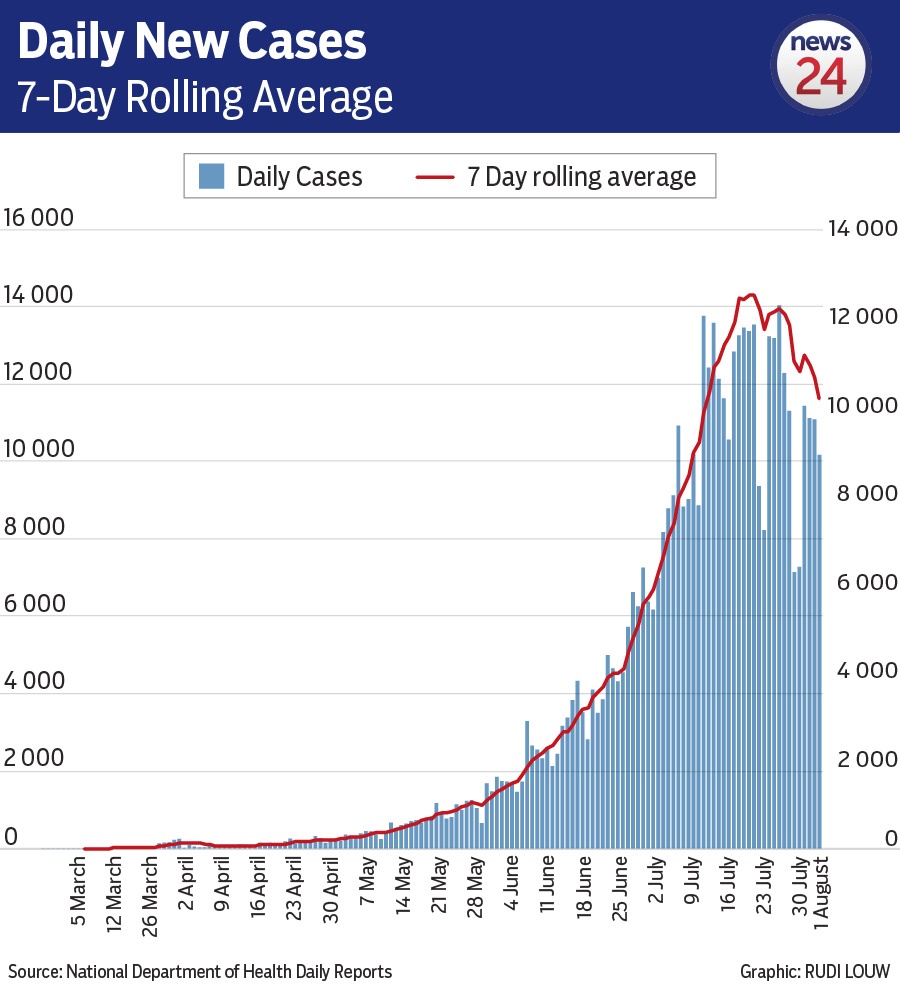


The strong surge of cases reported in Gauteng since June is also seeing a significant decline, which is clearly visible when the daily case increases are presented as a seven-day rolling average.
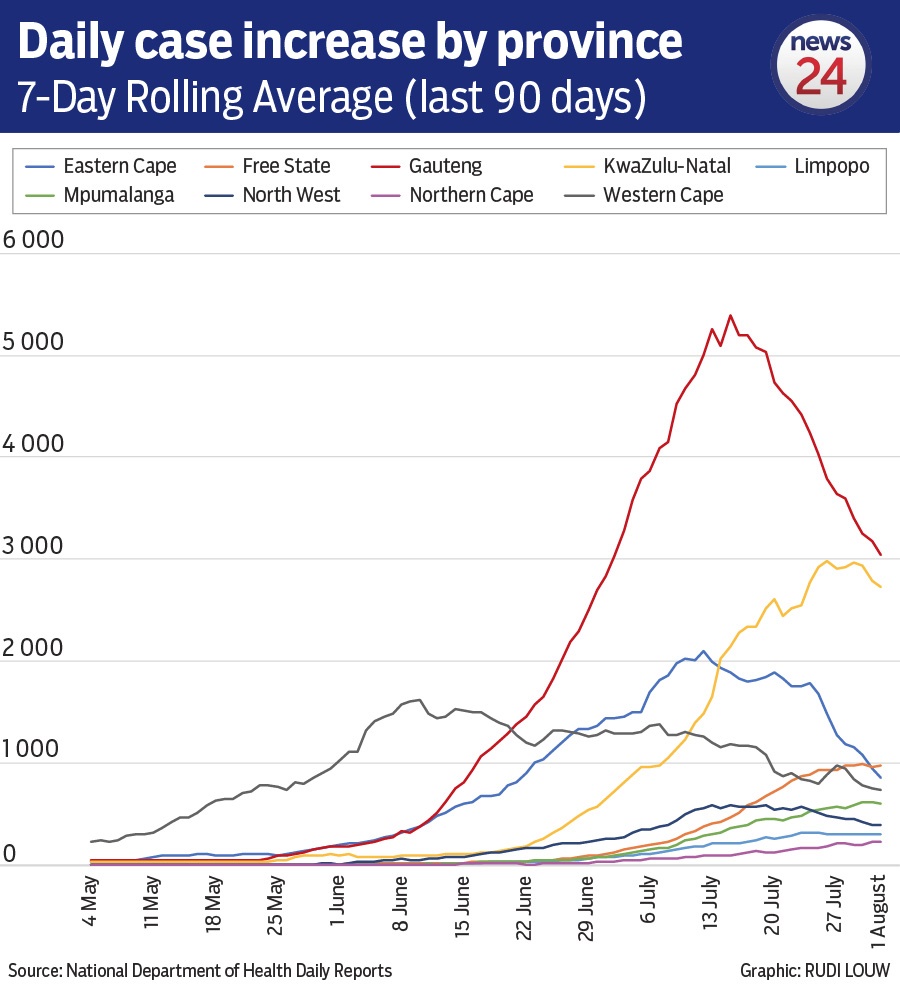


Daily testing has also declined overall, dropping from an average that hovered near 50 000 a day to below 40 000 a day, and when presented together with daily cases, the correlation between testing and cases found is clear.
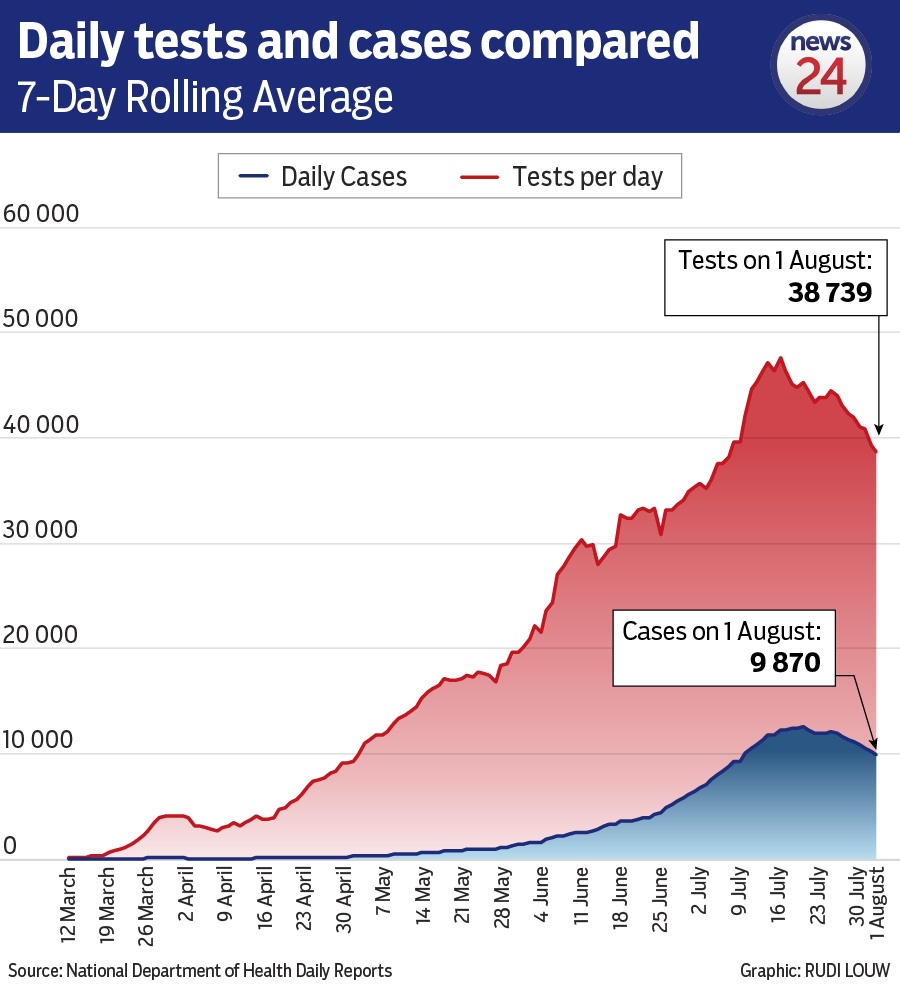


But the percentage of tests that result in positive Covid-19 cases has remained relatively stable, around the 25% mark for the month of July, although this crude positive rate is also showing a decline.
This analysis is potentially problematic when made with the reported totals of cases and tests released daily by the national Department of Health, because of the remaining uncertainty over when the samples tested were collected.
It is possible that samples collected from patients over a number of days could be batched together in the daily reporting, making a time-based analysis flawed.
The latest weekly report on testing by the National Institute for Communicable Diseases (NICD), which analyses positive cases found by the day the samples were collected, found the percentage of tests returning positive was 31.2% for the week of 19 to 25 July, the same as the previous week, at 31.7%.
For the week of 19-25 July, 18 000 less tests were done than the week before. At over 30% tests found to be positive, the two weeks represent the highest positive testing rate found since the outbreak began.
The private sector remains responsible for the largest number of tests done, and also the higher number of tests returning positive.
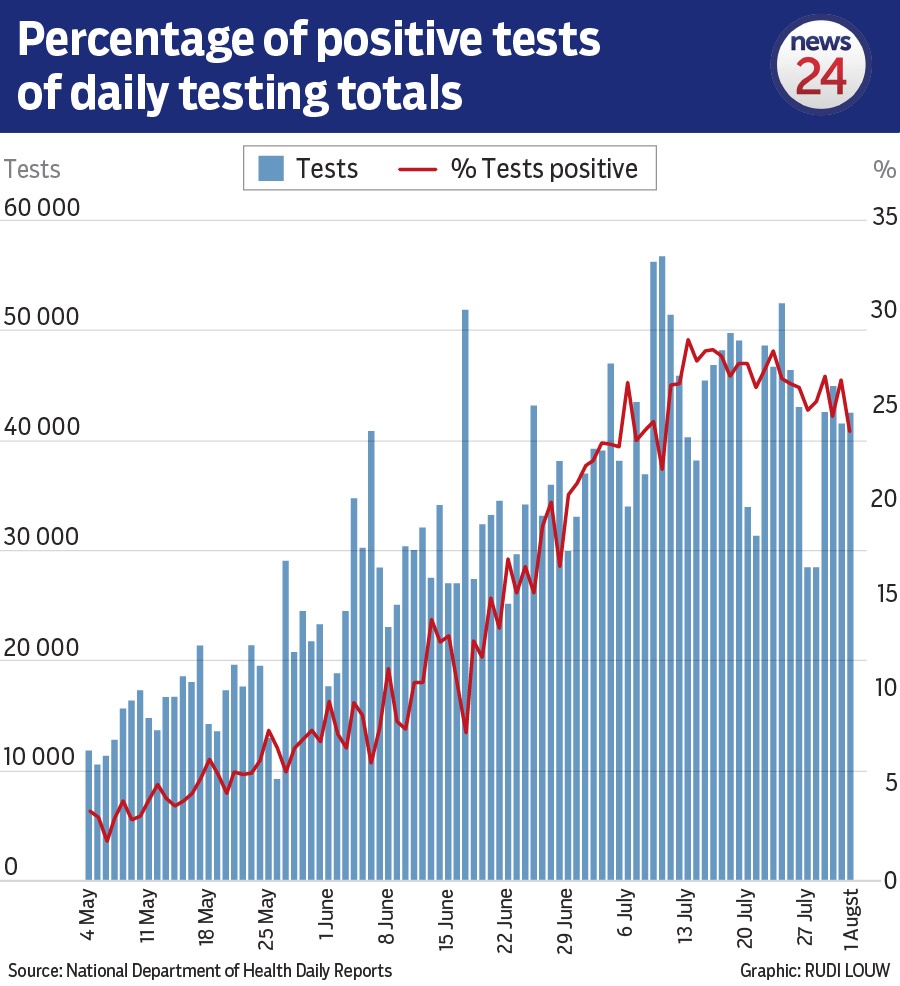


But the number of daily tests in the private sector has shown a marked decline.
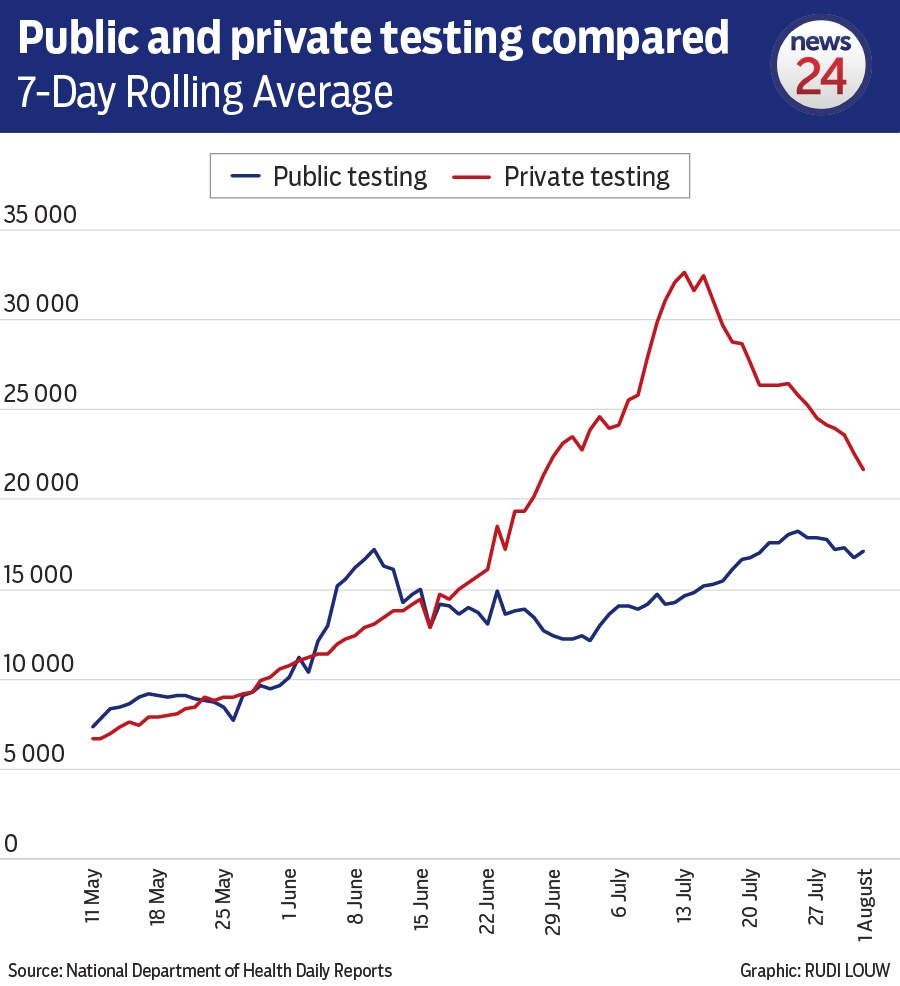


According to the NICD’s weekly hospital surveillance report, the number of hospitalisations is also showing a slight decline.
It is important to note that only 29% of public hospitals form part of the DatCov system established by the NICD to specifically track hospitalisations and outcomes of Covid-19 cases in hospitals nationally.
100% of private hospitals are reporting data on the system. Although the number of public hospitals reporting Covid-19 hospitalisation data is small, several of the largest public hospitals in the country are using the system.
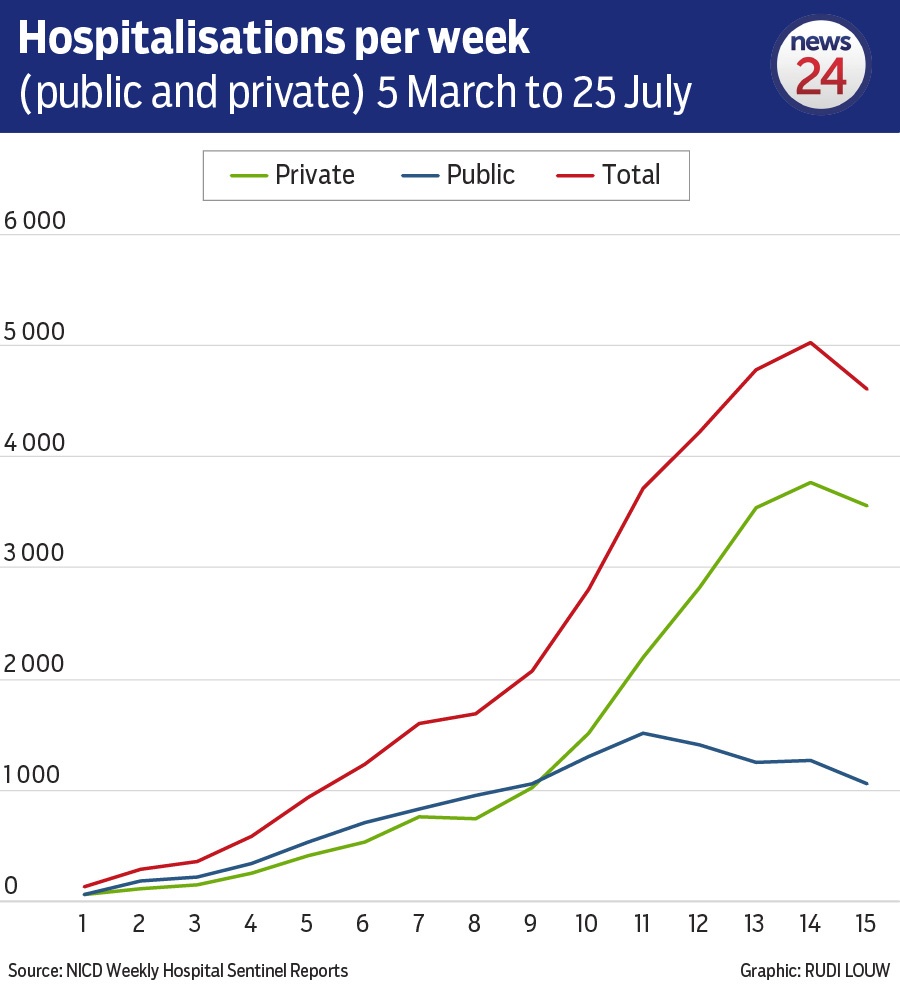


The number of active cases nationally are also showing a decline, but is still significant at 150 000. Active cases is a crude metric obtained by subtracting the number of deaths and recoveries from the number of confirmed cases.
But due to the uncertainty that exists over the reported numbers of cases, deaths and recoveries, this metric has been described as unreliable by some epidemiologists.
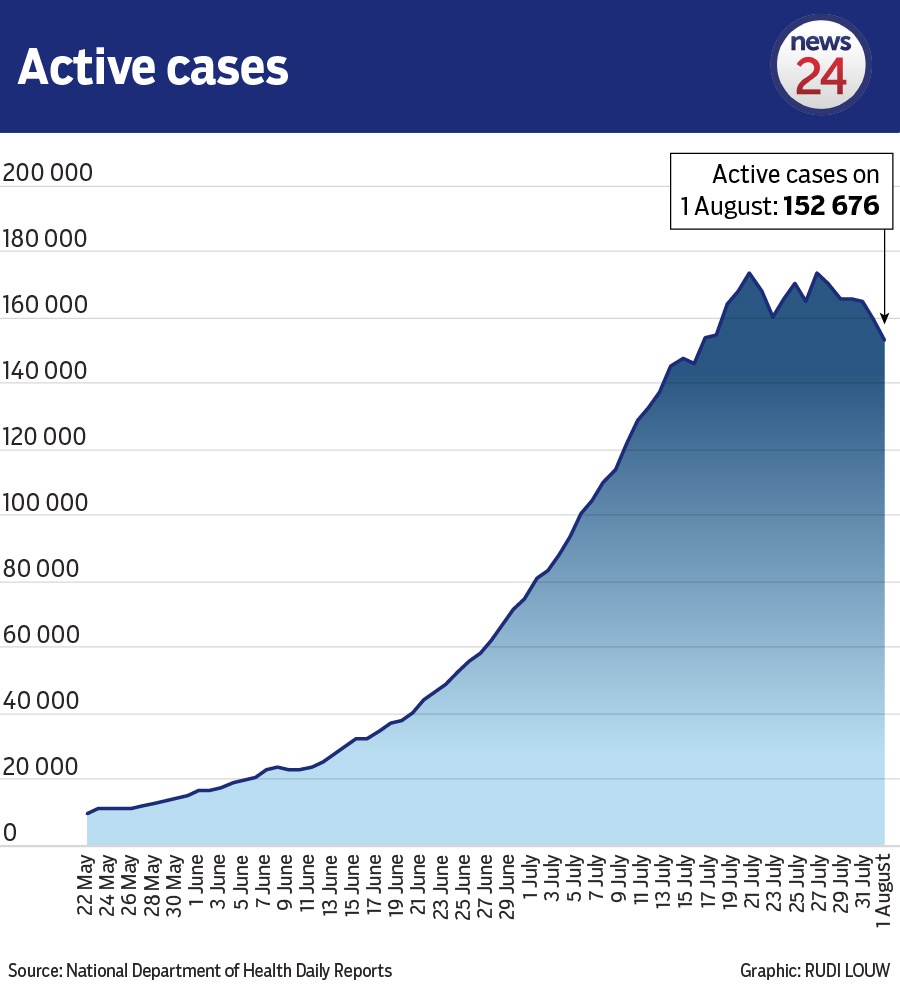


South Africa has one of the lowest crude mortality rates in the world, despite ranking fifth overall for the number of cumulative Covid-19 cases.
The crude mortality rate is the percentage of deaths reported from confirmed cases.
As of 1 August, 8 153 confirmed coronavirus deaths had been reported.
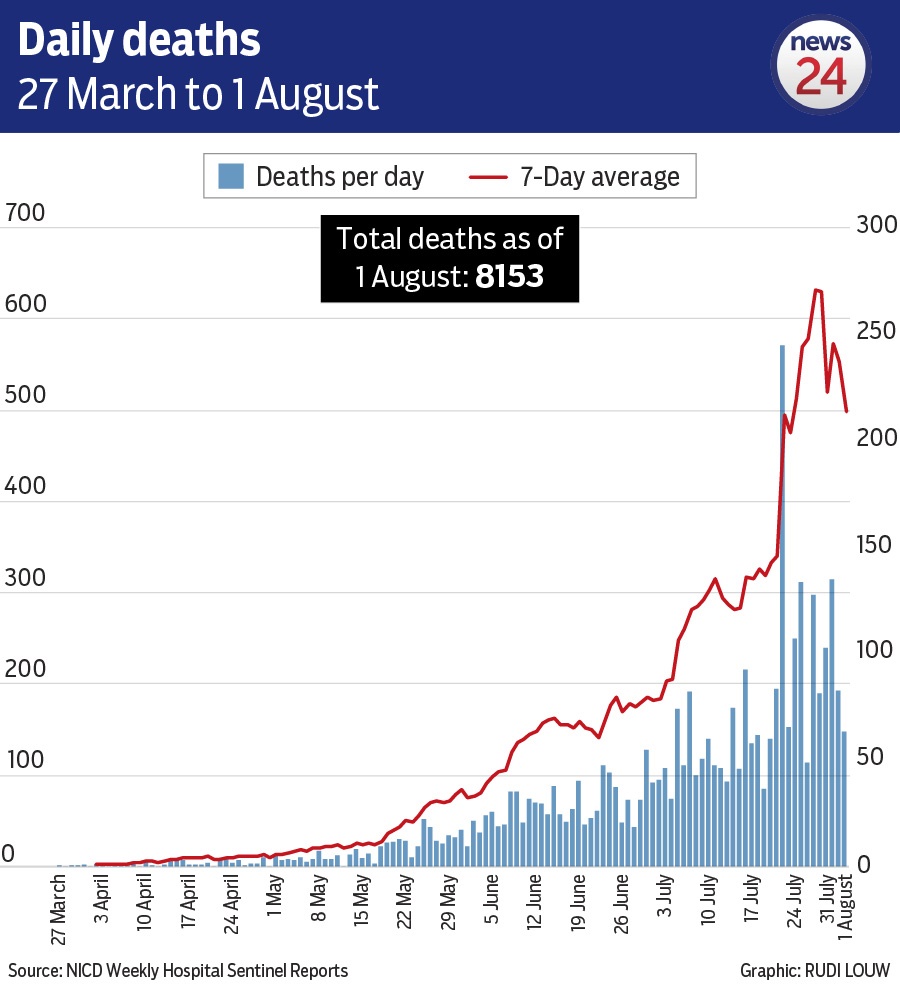


This number has come under considerable scrutiny, however, as a result of research and analysis done by the Burden of Disease Research Unit, made up of researchers and academics based at the Centre for Actuarial Research at the University of Cape Town and the SA Medical Research Council.
The unit has found an estimated 17 000 excess deaths, some of which could potentially be attributed to Covid-19, since the outbreak began.
ALSO READ | Researchers find ‘huge discrepancy’ between reported number of Covid-19 fatalities and excess deaths
“After a rapid rise in infections over the last two months, the daily increase in infections appears to be stabilising, particularly in the Western Cape, Gauteng and Eastern Cape.
“While it may be too soon to draw firm conclusions, this suggests that the prevention measures that South Africans have implemented are having an effect,” Ramaphosa said.
Ramaphosa also said that a team of people “drawn from several institutions”, led by the Biovac Institute, was preparing to manufacture doses of a successful vaccine locally.

